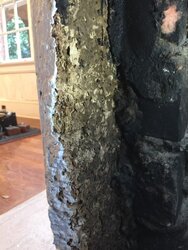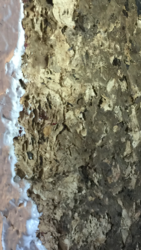I recently purchased a 1940 minimal traditional home that has a unique fireplace surround/facing. At first glance it appears to be a stone and metal fireplace that has been painted, but upon closer inspection I realized that the entire thing must have been made from a mold. The materials looks like some type of early particle board. Does anyone have any ideas of what this could be made of? Also, the arch appears to have been damaged over the years. Would it have had some type of insert originally?
There is a hole cut out in the hearth with what looks to be an old ash dump where they ran a gas line later. I recently removed the old and deteriorated gas logs.
Thanks in advance,
Calvin
There is a hole cut out in the hearth with what looks to be an old ash dump where they ran a gas line later. I recently removed the old and deteriorated gas logs.
Thanks in advance,
Calvin




